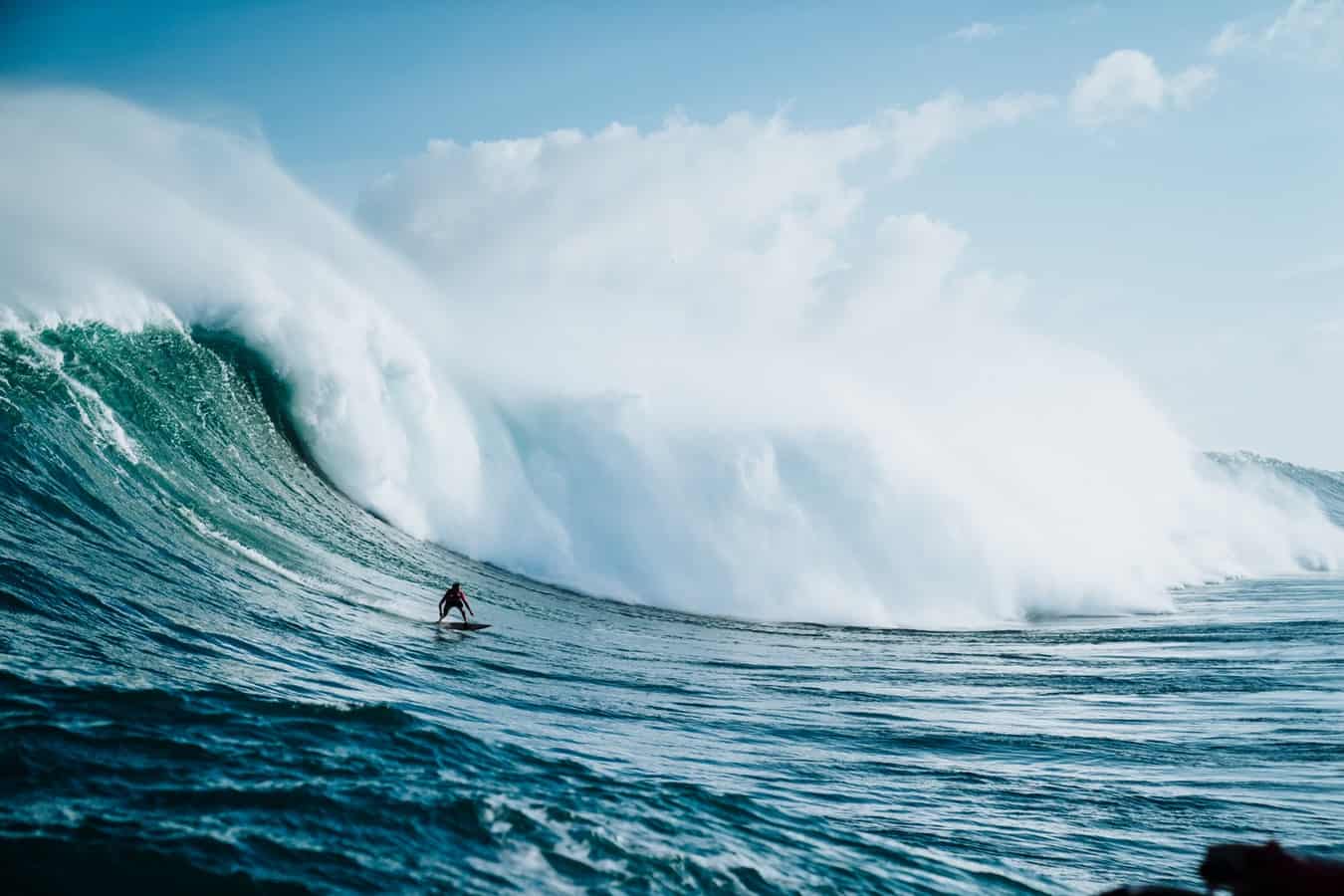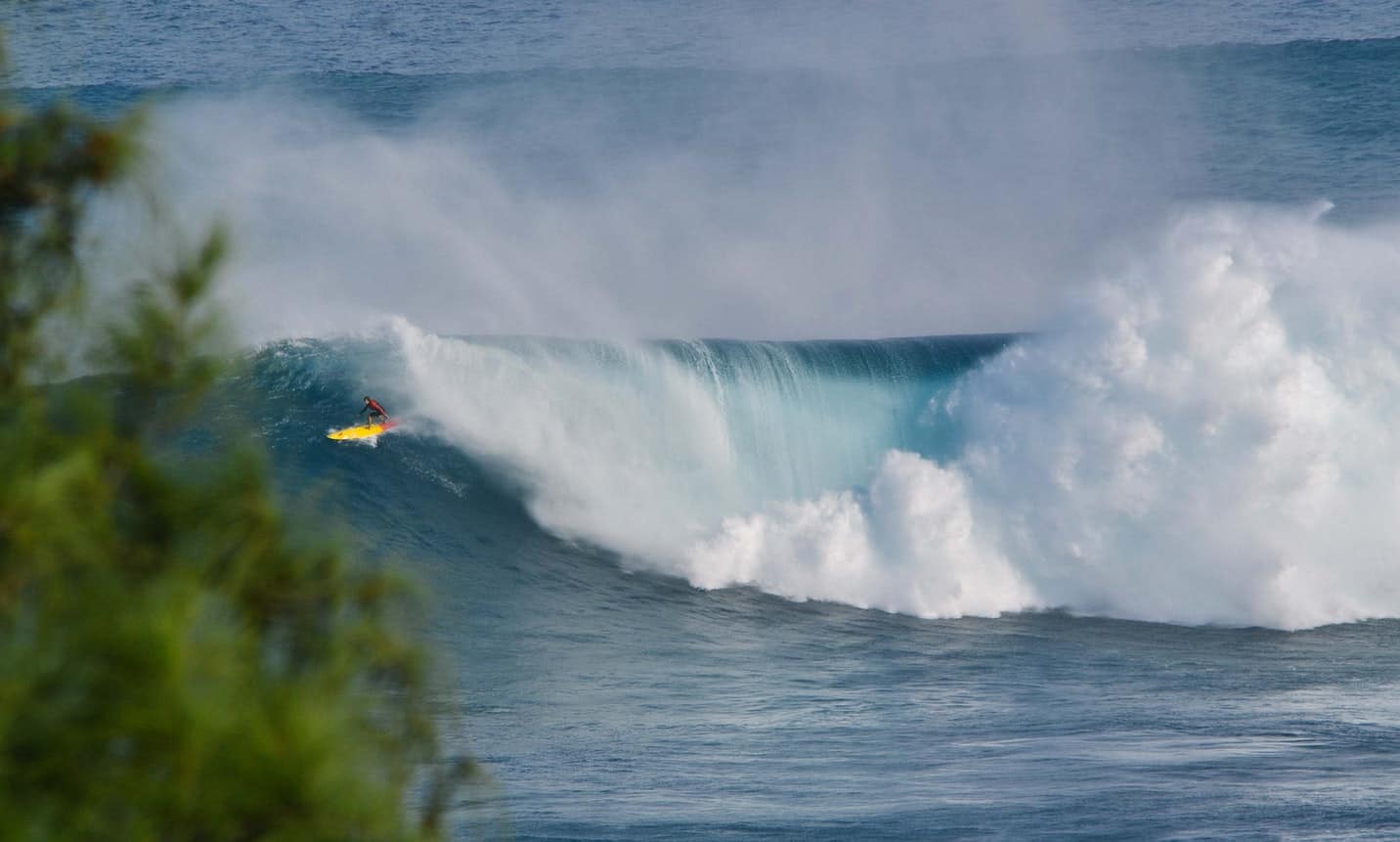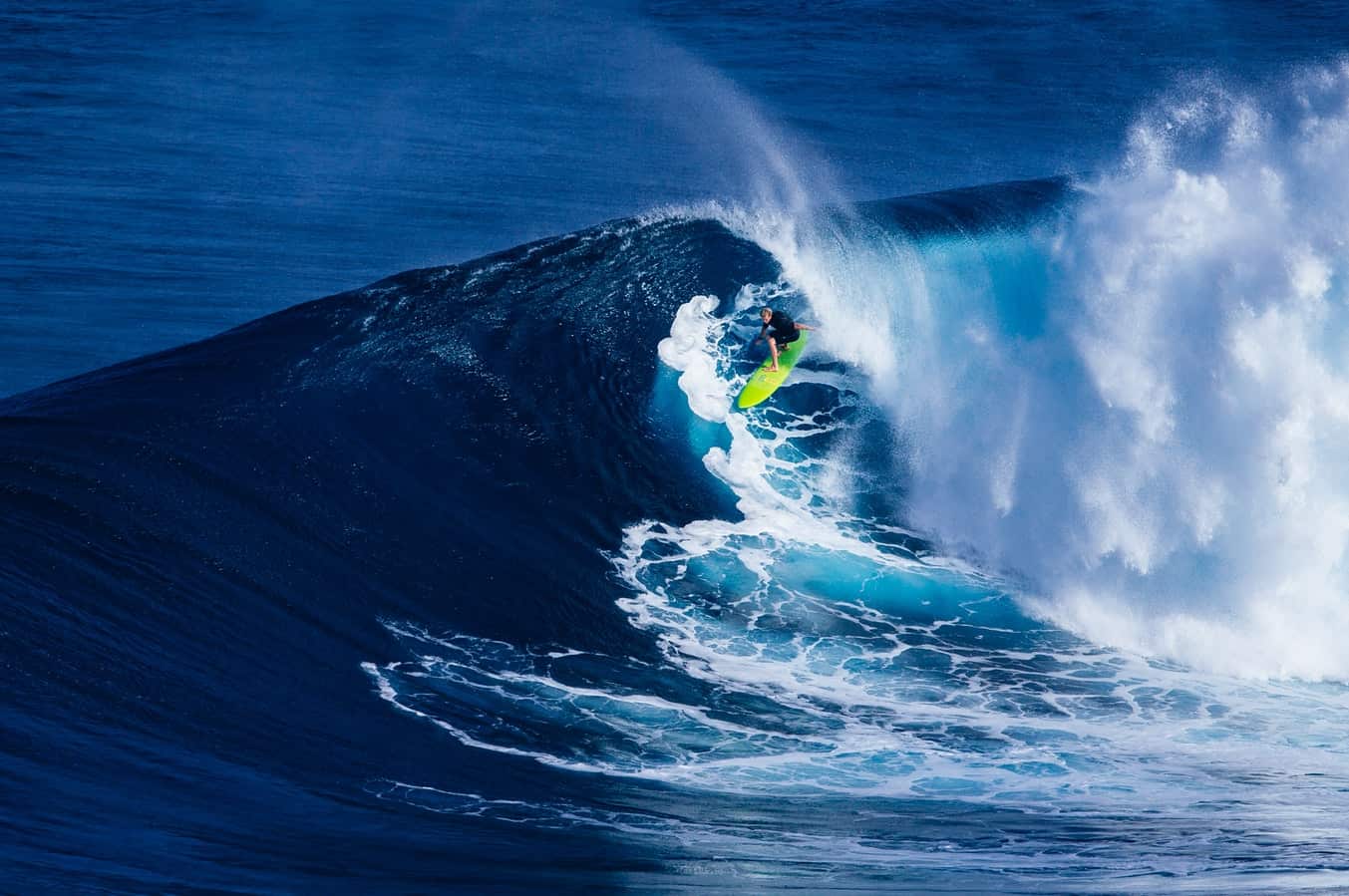If you’ve ever been to a surf competition, there’s a good chance you’ve been wowed by the event. There are competitions for kids or beginners, world-class elite surfers, and everyone in between! Notably, people commend surf competitions for excelling in finding a healthy balance between functioning as legitimate, highly coveted, high-level, and elite competitions while still feeling relaxed, fun, celebratory, supportive and sportsman-like. Whether you’re an elite surfer, beginner surfer who’s excited to compete, or you’re simply someone who appreciates spending a nice day watching surfers catch some waves; surf competitions are great places to get enthused about the sport. Many people have questions about how surf competitions work and how they are scored. I decided to find out.
How exactly are surf competitions scored? The World Surf League is instrumental in establishing how surf competitions are scored. According to the World Surf League, most surf competitions are scored by a panel of judges on commitment and degree of difficulty, innovative and progressive maneuvers, combination of major maneuvers, variety of maneuvers, and speed, power and flow.
Surfers are scored on a scale of 0-10, 10 being the highest score for an impressive wave, and 0 being the lowest score for a not-so-good wave. Let’s investigate how surf competitions work, surf competition scoring criteria, who scores surfers, the potential issues with scoring surf competitions, and more.
How Surf Competitions Work
Every surf competition functions slightly different to the next, but there are some common factors that unite surf competitions and help to keep them standardized.
Almost all surf competitions are structured according to heats. To explain this, I want you to pretend that you are a surfer entering into a surf competition. Upon arrival at the surf spot on competition day, you will be assigned to a heat, typically via a number. Other people will also be assigned to your heat. You and the rest of the people in your heat will compete at the same time. Depending on the competition, there are typically two to seven people per heat, with most surf competitions averaging three or four people per heat. You and the other people in your heat will report to the ocean at your assigned time and spend an allocated period of time surfing. Usually, a heat lasts twenty to thirty minutes. During your time in the water alongside other competitors, you and your competitors will take turns catching waves in a structured order (more on this in a bit). Each time you catch a wave, the judges will score you on a scale of one to ten, ten being the highest, and zero being the lowest. More on this scoring criteria later.
So, how do you know whether or not it’s your turn to catch a wave? It’s imperative that you and your fellow surfers in your surfing heat work together to ensure no collisions and ensure that each surfer gets an equal chance to catch a wave without interference. On any given surf competition, you will be asked to wear a certain color. For example, you may wear red lycra, blue lycra, yellow lycra, etc. Nobody else in your heat will be wearing this color. These colors make it easy for judges to tell you and your competitors apart from afar.
When you are in the water surfing with your heat, you will look to the judging booth to see if it is your turn to catch a wave. If it is your turn to catch a wave, you will see a sign with your color (yellow for example), and directly next to your color there will be a sign with the number 1. This will mean that you get first priority for the wave, and that it’s your turn! If there is a number two next to your color, you have second priority; if there is a number three you are on third priority, etc. If you are not first priority but get in the way of a surfer who is when they are trying to catch a wave, your score will be penalized.

Depending on how well you do in your heat, you will either advance to the next heat (the next round of competition) or be eliminated from the competition. Usually, the top half of the heat advances and the bottom half is eliminated. For example, in a heat of four, the top two will advance and the bottom two will be eliminated. This process continues until the final heat, where there are usually only two surfers going head to head. The surfer with the top score from the final heat is the overall winner!
There is usually a fun awards podium at the end of a surf competition, where the winner is given a trophy or metal, with flowers, cheers and lots of praise! This joyful ceremony is usually marked by its sportsmanship. The surf community is a close and supportive one, so typically there is not much beef between competitors. Rather, the competitors cheer each other on and celebrate each other’s endeavors.
An average surf competition is quite long. Its length depends on many factors including the level of competition, the number of desired heats, the number of competitors, and the consistency of the ocean’s surf conditions. For high level surf competitions, there is usually an eleven-day window in which surfers can compete. Within this eleven-day window, the surf competition may run every day, but it typically only takes up about four of these given days. This eleven-day window is called a waiting period.
What is a waiting period and why is it necessary? Surf competitions must allow for wiggle room for any given competition by creating a waiting period. This period is determined by the surf conditions of a given spot. For example, if an organization is hosting a surf competition in May somewhere that has a history of turbulent surf conditions during May, they should probably schedule their surf competition with a substantial waiting time, so that they have more days to hope for good surf conditions. On the flipside, if a surf organization is thinking of hosting a surf competition in May somewhere that has exceptional and reliable surf conditions and the weather is looking stable, they can probably take their chances a bit more and schedule a shorter waiting period.
Surf Competition Scoring Criteria
The World Surf League has been at the forefront of creating legitimate, standardized, and high level surf competitions and events. Therefore, they’ve also been at the forefront of creating a format and baseline for which surf competitions are usually scored worldwide.
The World Surf League was founded in 1976. According to their website, their mission is to “bring the athleticism, drama and adventure of pro surfing to fans worldwide; promote professional surfers as world-class athletes; act as good stewards of the environment both in and out of the water; and celebrate and grow the history, elite athletes, diverse fans and dedicated partners that together embody professional surfing today”. In doing so, The World Surf League organizes an annual world tour of high level professional surf competitions, broadcasts these events, writes and highlights surfers and surf events, and generally promotes surfing as a high-level respected sport through extensive media and journalism.
As mentioned, the World Surf League has created a yearly world tour of highly respected surf competitions. These surf competitions include: the “men’s and women’s Championship Tours (CT), the Qualifying Series (QS), the Longboard Championships, the Junior Championships, the Big Wave Tour and the XXL Big Wave Awards” (worldsurfleague.com). As part of this global tour, World Surf League has established rules and regulations for their competitions to ensure the safety of the surfer and to try to create some level of objectivity for scoring. These rules and regulations have gone on to become standard rules and regulations in the world of surfing.
According to the World Surf League, a panel of five judges should judge surf competitions. These five judges watch and observe surfers, and assign them a score according to their surf performance. The judges score on a scale of 0-10, ten being the highest for an excellent wave, and 0 being the lowest for a not-so-good wave. Their judging score is as follows:
[0.0 — 1.9: Poor]
[2.0 — 3.9: Fair]
[4.0 — 5.9: Average]
[6.0 — 7.9: Good]
[8.0 — 10.0: Excellent]
This scoring chart is from https://www.worldsurfleague.com/pages/rules-and-regulations)
According to the World Surf League, these scores are created fitting to the following criteria: commitment and degree of difficulty, innovative and progressive maneuvers, combination of major maneuvers, variety of maneuvers, and speed, power and flow.
While there are judges scoring each surfer, only three scores are actually taken into account. How does that work? The judges whose scores are the highest and the lowest of the five are disregarded, leaving only three scores to be taken into consideration. The following three scores are averaged, resulting in one final score for a given wave.
A given surfer may catch many waves during their heat, and they are allowed to choose their top two scores earned during their heat to submit for scoring. The surfers with the highest scores are the winners!
If you are interested to learn more about the details of scoring surf competitions, The World Surf League has written a one hundred and sixteen page (yep, you heard that right… 116 pages!) rulebook dedicated solely to this information. You can find this rulebook here.

Who Scores Surf Competitions?
Surf judge’s credentials vary depending on the level of competitions they are judging. Most surf judges are highly experienced surfers who have a strong background in surfing. For high level elite surf competitions, surf judges also have to complete a thorough training. Depending on whom you ask, one of the most reputable programs for surf judges is called the International Surfing Association, otherwise known as ISA.
The International Surf Association has created a “Judging & Officiating Development Program”. This program is “a comprehensive educational program that has been identified by leading sporting organizations as the worlds’ best educational practice in the development of quality accredited surfing officials. All judges that complete the ISA Judging & Officiating Accreditation Course are registered as ISA International Judges” (isasurf.org). These courses are done in person around the world.
The International Olympic Committee has recognized The International Surf Association’s Judging & Officiating Development Program as a legitimate and reputable accreditation program. Surfing has been added as an Olympic sport for the upcoming Summer 2020 Olympics in Tokyo. This is the first time in history that Surfing will be an Olympic sport. It is likely that the judges at the Olympics will all be registered as ISA International Judges.
The Potential Issues that Arise Scoring Surf Competitions
There has always been a sticky and awkward relationship between surfers and surf competitions. The main reason for this is that it’s near impossible to make a surf competition objective.
Nobody explains this awkwardness than Matt Warshaw. Matt Warshaw was a professional surfer and surf writer, as well as the editor at Surfer Magazine. He’s also written many books and articles about surfing. In 2010, Matt Warshaw published the book The History of Surfing. In this book, he touched upon the relationship between surfers and structured competitions. He wrote “…The relationship between surfing and competition remained awkward, for reasons Tom Blake had cited nearly three decades earlier. “On one occasion, about 1918,” Blake wrote in Hawaiian Surfriders, “a riding contest was held, the winner being judged on form, etc. Everybody disagreed and that led them to believe surfriding contests were impracticable.”
Another big event had to be cancelled for lack of waves, Blake continued, and at that point the Hawaiians shrugged and pretty much gave up on the whole idea—including Duke Kahanamoku, who skipped the inaugural Pacific Coast Surf Riding Championships in 1928, even though he was the event’s top-billed competitor.
This awkwardness remains today, and despite what a handful of world champions might claim… and sport undermines the systematic, organizational imperatives of competition better than surfing. Scorekeeping, for example. Ideas for objective scoring systems… In best-case scenarios, the result was to turn the sport into novel but nonsensical hybrid, like marathon dancing or competitive eating.
Subjective scoring is the only real option, but subjectivity creates inherent problems that have to be wrestled with at all times.”
In other words, what Warshaw is trying to say is that there’s no good way to fit surfing into a format that fits society’s expectations for a conventional competition. In a conventional competition, people expect that an athlete will be competing in the same conditions as another surfer, on the scheduled day of competition, and will be scored/judged as objectively as possible.
However, this simply can’t be true for surfing! As hard as we try, ocean surfing can’t meet these expectations. Surf competitions are often canceled due to bad surf conditions, or aren’t able to complete the competition within their wait time due to poor conditions.
The most notable issue regarding surfing competition’s struggle to be objective is the waves. If the conditions are favorable and a surf competition is able to go off within their scheduled window/wait time, every surfer is still catching a different wave than all of their competitors. Many people argue that it’s extremely difficult to objectively score one surfer against the other if every surfer is riding an entirely different wave of a completely different ease or difficulty.

For these reasons and others, some people in the surf world are fans of artificial waves in surf pools and surf parks. Surf parks/pools create man-made waves. With a push of a button, you can create a standardized wave of your choice. Beginner? Hit that button for a cushiony three-foot wave. Working your way up? Push a button for a barrel or a punchy lip! At the touch of a button, these surf pools/waves offer standard waves that are consistent, guaranteed, not dependent on the weather, and will be the same every time.
The concept of surf pools originated in Japan. Since then, it’s picked up steam and gone global. Surfer Kelly Slater is a huge fan of artificial surf pools/waves. In 2007, he founded the Kelly Slater Wave Company (KSWC). By 2019, he had opened a surf park in Florida, which is now being regarded as hosting the best artificial wave pool in the world.
These surf pools & artificial waves sound great for a surf competition, right? Having a surf pool with identical, standardized guaranteed waves would eliminate the need for surf competitions to schedule such long wait windows, would substantially reduce the chances of a surf competition having to cancel because of poor weather conditions, and would allow each surfer to compete on the same wave, making it a far more objective sport to judge!
However, many surfers do not want to compete in artificial surf pools. Many surfers argue that competing in a wave pool on the same exact waves to ensure controlled conditions would result in creating an entire new genre of the sport. Plus, many surfers dread the idea of surfing in a pool, as they believe that it diminishes what makes surfing so great in the first place –working with the ocean, connecting with nature, spending time outside, reading the waves, etc.
Related Questions:
Will the Olympics be Judged in a Wave Pool or in the Ocean?
In the 2020 Tokyo Summer Olympics, surfers will compete in the ocean. The chosen surf spot is Shidashita Beach. This beach is located in Chiba, just outside of Tokyo.
What is the Most Reputable Surf Competition?
The WSL (World Surf League) World Tour is arguably the most reputable surf competition in the world. It is a competition series consisting of ten or eleven different locations. These competitions include but are not limited to (pulled from SurferToday.com):
- Corona Open Gold Coast | March 26 – April 5
- Rip Curl Pro Bells Beach | April 8-18
- Margaret River Pro | April 22 – May 2
- Quiksilver Pro G-Land | June 4-14
- Oi Rio Pro | June 18-27
- Corona Open J-Bay | July 7-19
- Michelob ULTRA Pure Gold Freshwater Pro | September 15-20
- Roxy Pro France | October 1-11
- Meo Rip Curl Pro Portugal | October 14-25
- Hawaii Pro | November 25-December 6
How do I Enter Into a Surf Competition
Many surf competitions are invite only or require you to qualify for them. However, some are open to the public! To enter into a surf competition, you should assess your current skill level and determine what level of surf competition you are ready for. Then, either sign up or find a qualifying competition! There is usually an entry fee for a surf competition.


